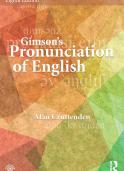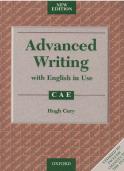English Pronunciation in Use Pack Intermediate Book and Audio CDs ( PDFDrive.com )
This document was submitted by our user and they confirm that they have the consent to share it. Assuming that you are writer or own the copyright of this document, report to us by using this DMCA report button.
English •
•
•
Pronunciation In
Use
Self-study and classroom use
Mark Hancock
vM
C AM BR I D G E UN I VE R S ITY PRESS
Contents To the student To the read1er
5 7
Map of ccereers described in phonological terms
•
Section A Letters and sounds 1
Bye. buy Introducing Ietttn and sounds
2
P~.plall
3
&uk,t=1<
4
Ria, ri$e
5 6
Doumt~ Mm, WIn
7 8 9 10 11
12 13 14
15 16 17 18 19 20
Carrot. ubbage Few, view Gate, Kate
Hear,
~ ·rt.
year
Wine, wm Sheep , ;UP. theap
Flies. fries Car. care Some. $Nn. sung N ote, not Arthur's mQther Sun, fitlJ, J_ Shin, short TO)!. town
'0
leJl. /tt:I fbI, /pI
14
"',hi
16
12
!d!. /tI Ii :!, lei '~. hJ /fl, Iv! IgI, M /hI,/w/, Ij! la l1, hi IJI, /d:/,ItJI !V,Ir! lo:(r)/,lea(rY
32 34 36
fmJ, /n1,1r;j/
38
1~.loI
/9/, IN IAI,IuI, fu:l 13:(rll, /::l:(r )l 1:>11, /aJ.JI
18
20 22 24
26 28 30
40
...
42
46 48
Section B Syllables, words and sentences 21 22
Eye, ~ mine Introducing lI}'l.I.abks Sahmlay &pkmlNr 13th lntroducing word scess
SO 52
23
R - m. ~ told her
54
Introducing seeeeece stress
Syllabl ~s
24 25 26 27
Dh, no snow! Ccesceanes at the start o f syllables Go - goal - gold Consonants at the end of syllables PauJ'$ ulh. Mu's flJXn Syllables: plural and other -6 cndinp P~e pl4yed. Rit4 rn kd SyUables: adding past tense endings
56 58 60
62
Word st ress 28 29
30 31
REt:ord, rrt:O RD Stress in two-sy llablc words Sewnd hand, booluhop Stress in compound words Unforgett4hle Stress in longer words 1 Pub/it;, pub licity Stress in lo nger words 2
64 66
68 70
]
Sentence stress 32 33 34
35 36 37
38 39 40
DON'T LOOK NO W! Sentences with all the words stressed THAT could be the MAN Unstressed words I'll ASK her (Alaska) Pro no uns a nd contractions She was FIRST Pronouncing the verb be WHAT do you THINK? Auxiliary verbs A PIECE. of CHUSE Prono uncing sho n words (a, of. or) Pets enter, pet centre Joining words 1 After eight, after rate Joining words 2 Greet gJU!sts, Greek gue$ts Joi ning words 3
n 74 76
78 80 82 84 86 88
Section C Conversation 41 42 43 44 45 46 47 48 49
50 51 52
53 54
55 56 57
58 59 60
Could you say that again? Understanding conversation 90 'Was that the question f" he asked. Read ing aloud: ' pro nou ncing p unctuation ' 92 A shirt and a tie I a shirt and tie Grouping words 94
Ehm •.. Showing that yo u want to continue Well, anyway . .. Telling a story I mean, it 's sort of like .. . Understanding small talk Right. OK ... Understa nd ing insrrucrio ns 'Like father like son ' as they say Quoting speech He JJliJl win Introd uction to emphatic stress Schwam ... bJJm Schwam Emphasising added details I think you're in ~seat Emphasising important words o,ips or salad? Emphasising co ntrasting a lternatives Fifty? N o, fifka! Emp hasising co rrections Look who's talking! Introducing tones Here? Yes, here! Asking and checking tones Where were you born? Tones in asking for information We're d osed tom orrow Tones in new and o ld information Dh , really? Contin uing or finishing tones It's fun. isn" it? Agreeing a nd disagreeing rcnes It was brilliant! High tones
96
98 100 10 2 104 106
108 110
112 114 116
118 120 122 124 126 128
Section D Reference 01 02 03 04
05 06
•
Introduction to p honemic symbols Pronunciation test G uide for spea kers of specific languages Sound pairs Sentence stress phrasebook G lossary
130
137 141 144 161 16 2
~
166
Acknowledgements
200
To the student English ProtfJl7ldation in Use is a book to help students of English to work on pronunciation., for both speaking and undersranding. It is wrinm mainly for students of inn:rmediare bel
What will I need? You will need a cassette o r CD playe r to listen to the reco rded material that goes with this book. It will be very useful if you ha ve equipment [ 0 record you r own voice, so that you can hear your own progress. This symbo l indicates the tra ck nwnber for reco rded material l.e. CD or cassette A. track 1.
®
Also, wh en you are srudying individua l sounds, it is sometimes useful if you h ave a mirror. With this, you can co mpare the shape of your own mouth to the m outh in d iagra ms like this one from Unit 8.
See page 163 foe a Labelled diagram of the mouth and th roat.
How is English Pronunciation in Use organised? There are 60 units in the book . Each unit looks at a differmr point of pronunciation. Each unit has rwo pages. The page on the left has exp lanations and exa mples, and the pa ge on th e right has exercises. The 60 units are d ivided into three sections o f 20 units eac h. Section A is a bout how to say an d spell individual sounds. Section B is about joining sounds to ma ke words an d sentences. Sectio n C is a bo ut pr onunciation in co nversa tion. After the 60 units., there is a founh section, Section D, which co ntains th e follo wing: • • • • •
Introducti on to phonemic symbols Pronuncia tio n t l:5t Guide for speakers o f specific languages Sound pain Seereece suess phrascbook
o G""""" At the end of the book there is a Key with answers. With the book, there is also a set of four cassettes or CDs, one for each seaion of the book.
What order shall I do the un its in? It is better if you balance the work that you do from the th ree sections: first, do a unit from Section A, then a unit from Section B, then a unit from Section C, th en a no ther un it from Section A, and so on .
So, for exa mple , you could begin like this: Unit I , then Unit 2 1. then Unit 41 , the:n Unit 2, etc. At th e end of each uni t, yo u will find a not e telling you w here to go ne xt .
If you hav e problems in hearing the difkrence between individual sounds in Sa.:rion A of the book, you wil l be directed to one of the: exercises in S«rion D4 SoJmJ pairs.
5
You ma y w ant to focus your work more close ly. If so, beee are more Wfeas:
• Do the Pronunaatiotr tnt in Section o . Count your score for each section. If you d id specially well in an yone o f the sections, then yo u may want to row the units in that section of the book. • Look at Section 0 3 Guide for speaken of specific languages. Find your own langua ge (the languages are in alphabetical o rde r], The noees there will tell you w hich units are less important for spea kers o f your langu age and w hich sound pairs in sectio n D4 are recommended.
Do I need to know the phonemic symbols? It is possible to use th is book without knowing phonmUc sym bols, Ho~C"r, it is U5C'fuJ to learn them because they make it easier to ana lyse the pronunciation o f words. Also, many dictionaries uSC' phonemic symbols to show pronunciation. In Section 0 1 Introduction to phon~jc symbols, yo u w ill find a table of the phonem ic symbols, p lus a set of puzzles to help you learn th em.
Is this book only about pronunciation in speaking? No, it M 't. Pronunciation is important fe r both listening and speaking. In many o f the units. especia lly in Secrions B and C. the pronunciation poi nt is more important for listeni ng than speaking. For example. when they are spea king fast, many na tive spea kers join words together in certain ways. You need to be able to understand th is when you hear it, but it does ReX matter if you do not speak in th is way. People will still understa nd yo u. Pronunciation points like this are ~ shown with a grey background an d this sign: It is your dlOic:e whether you w ant to just focus on listening, o r whether you want to try to spea k that wa y too.
What accent of English is used in this book? For a model for you to copy when speaking, we have used o nly one accent, a Southern British accent. But when you are listening to peo ple spea king English. you will hear many different accems, If you are not used to these, it can be very di fficult to undcmand what is being said . Fo r this reason, you will hear a variety of acceers in some parts of the Iistming material. foe this book.
What is the Sentence stress phrasebook? It can help yo u to spea k more fluentl y if you say some: very common expressions with a fixed p ro nu nciati on , like a single word. In Section 0 5 $mtolt:e stress pbrasebook , so me co mmon expressions are given. and th ey are grouped together by th e way they sound: by th eir sentC'fJU sITus or rhythm. You an practise listening and repeating these to improve your fluency.
What is in the Glossary? In this book. the re are some words wbjch are specific to the subject o f pronunciation. You a n find an explanation o f the meaning of these words in Section D6 Glou.:try.
How should I use the record ings? When you are working wit h the recording, yo u should rep lay a track as o ften as you need to. When you are doing an exercise you may also need to pause the recording alter each sentence to give you lime to think or 10 write your a nswers, When you are instructed 10 repeat singk weeds there is a space on the recording for you 10 do so, but if you are repeating whole senrena:s you will have to pause the recording each time.
•
To the teacher Although English Prom4ndatiOf1 in Uu has hem written SO that it can be used for self-srudy, it will work equally well in a dass situation. In a classroom context, the learners can get immediate gui

Related documents
201 Pages • 4,675 Words • PDF • 18.8 MB
164 Pages • 1,804 Words • PDF • 267.4 MB
128 Pages • PDF • 14 MB
227 Pages • 143,101 Words • PDF • 86.5 MB
98 Pages • PDF • 18.7 MB
4 Pages • 1,814 Words • PDF • 3.8 MB
182 Pages • PDF • 52.1 MB
408 Pages • 155,585 Words • PDF • 29.2 MB
161 Pages • 102,104 Words • PDF • 23.2 MB
67 Pages • PDF • 15.8 MB
287 Pages • PDF • 109.7 MB
237 Pages • 51,664 Words • PDF • 14.7 MB











